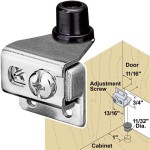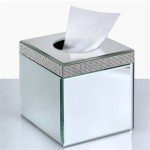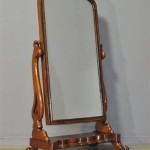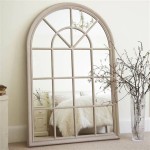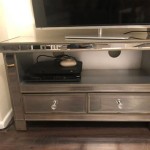Mirror Mastic Removal Tools: A Comprehensive Guide
The removal of mirrors often presents a significant challenge due to the strong adhesives, commonly referred to as mastic, used to secure them to walls. Successfully removing a mirror without damaging the wall surface or the mirror itself requires careful planning and the use of appropriate tools. This article aims to provide a comprehensive overview of the tools available for mirror mastic removal, discussing their functionalities, advantages, disadvantages, and best-use scenarios.
Mastic adhesives are formulated to create a permanent bond, making their removal a labor-intensive process. Attempting to forcibly remove a mirror without the right tools can result in shattered glass, damaged drywall, and potential injury. Understanding the nature of the adhesive and selecting the appropriate tools are crucial for a safe and efficient removal process.
Before beginning any mirror removal project, it is essential to prioritize safety. This includes wearing safety glasses to protect the eyes from flying debris, gloves to prevent cuts from sharp glass edges, and potentially a dust mask to avoid inhaling dust particles generated during the removal process. Additionally, covering the floor beneath the mirror with a drop cloth or cardboard is recommended to protect the flooring from falling glass and debris.
Choosing the Right Tool: A Matter of Strategy
Selecting the optimal tool for removing mirror mastic depends on several factors, including the size and weight of the mirror, the type of adhesive used, the substrate material of the wall, and the desired outcome (e.g., preserving the mirror versus simply removing it from the wall). There isn't a single "best" tool; rather, the ideal choice is contingent on the specific circumstances of the project.
The initial assessment of the mirror and its adhesion to the wall is critical. Examine the edges of the mirror to identify any gaps or areas where the adhesive has begun to weaken. Understanding the pattern of the adhesive application is also helpful, as this will inform the strategy for attacking the mastic bond. If possible, determining the type of mastic used will allow for the selection of solvents or heat treatments that may aid in the removal process.
For example, if the mastic appears to be relatively soft and pliable, a simple putty knife or scraper might suffice. However, if the mastic is hardened and forms a strong bond, more specialized tools like piano wire or oscillating multi-tools may be necessary.
Common Mirror Mastic Removal Tools and Techniques
Several tools are commonly employed for mirror mastic removal, each with its own strengths and weaknesses. These tools can be broadly categorized into manual tools, power tools, and chemical solvents.
Manual Tools:
* Putty Knives and Scrapers: These are basic hand tools used to pry and scrape away the mastic. They are effective for removing mirrors attached with a minimal amount of adhesive or when the adhesive has already begun to degrade. Different blade widths and materials (e.g., flexible plastic, rigid steel) are available to suit various applications. The key is to work slowly and carefully, applying even pressure to avoid damaging the wall or the mirror. Sharpening the blade regularly will improve its effectiveness. * Piano Wire (or Similar Thin Wire): This technique involves threading a thin, strong wire behind the mirror and using a sawing motion to cut through the mastic. The wire is typically attached to two handles, allowing for a controlled and consistent cut. This method is particularly effective for large mirrors with a significant amount of mastic. Careful attention must be paid to prevent the wire from breaking or scratching the mirror surface. * Shims: Thin, wedge-shaped pieces of plastic or wood are used to gently pry the mirror away from the wall. Multiple shims can be inserted around the perimeter of the mirror to distribute the pressure evenly. This method is less aggressive than using a single pry bar and reduces the risk of cracking the mirror.Power Tools:
* Oscillating Multi-Tool: This versatile tool can be fitted with various blades designed for cutting, scraping, and sanding. When equipped with a scraper blade, it can be used to efficiently remove mastic from the wall. The oscillating motion allows for precise control and reduces the risk of gouging the surface. However, care must be taken to avoid overheating the blade and damaging the wall material. * Heat Gun: Applying heat to the mastic can soften it and make it easier to remove. A heat gun should be used with caution, as excessive heat can damage the mirror or the wall. It's recommended to start with a low heat setting and gradually increase the temperature as needed. A scraper can be used in conjunction with the heat gun to remove the softened mastic. * Hammer Drill (with chisel attachment): This is a more aggressive method, suitable for removing large quantities of hardened mastic from concrete or brick walls. The chisel attachment is used to break up the mastic, but it's crucial to avoid direct contact with the mirror or the wall covering to prevent damage. This method is not recommended for drywall or other fragile surfaces.Chemical Solvents:
* Mastic Removers: These are specialized chemical solvents designed to dissolve or soften mastic adhesives. They are typically applied to the mastic and allowed to dwell for a specific period of time before being scraped away. It's important to choose a solvent that is compatible with the wall material and the mirror backing. Always follow the manufacturer's instructions carefully and wear appropriate safety gear, including gloves and eye protection, when handling chemical solvents. * Acetone, Mineral Spirits, or Citrus-Based Solvents: These common household solvents can sometimes be effective in dissolving or softening mastic. However, they may not be as effective as specialized mastic removers and may require multiple applications. It's essential to test the solvent on an inconspicuous area of the wall and mirror before applying it to the entire surface to ensure compatibility.Choosing the Correct Blade for Oscillating Multi-Tool :
When using an oscillating multi-tool, the choice of blade is crucial for effective mastic removal. There are several types of blades available, each designed for specific materials and applications. For mastic removal, rigid scraper blades are generally the most effective.
Rigid scraper blades are typically made from high-carbon steel or stainless steel and have a sharp, flat edge. The rigidity of the blade allows it to effectively shear through the mastic without bending or flexing, which can reduce its cutting power. Some scraper blades also feature a slight offset, which allows them to reach into corners and tight spaces.
When selecting a scraper blade, consider the width of the blade and the type of wall covering. A wider blade is generally more efficient for removing large areas of mastic, while a narrower blade is better for detail work and tight spaces. For delicate wall coverings like drywall, it's important to use a blade with rounded corners to prevent gouging or tearing the surface.
Another option for mastic removal is a carbide-grit blade. These blades feature a coating of carbide grit, which provides exceptional cutting power and durability. Carbide-grit blades are particularly effective for removing stubborn mastic from hard surfaces like concrete or tile.
When installing the blade, make sure it is securely attached to the oscillating multi-tool and that the blade is oriented in the correct direction. Always wear safety glasses and gloves when using an oscillating multi-tool, and be careful to avoid overheating the blade.
Preparation and Implementation: A Step-by-Step Approach
Regardless of the tools chosen, a systematic approach to mirror mastic removal is essential for success. This approach typically involves the following steps:
- Preparation: Protect the surrounding area by covering the floor and adjacent walls. Wear safety glasses, gloves, and a dust mask.
- Initial Assessment: Examine the mirror and the surrounding wall to identify the type of mastic used and the areas where the bond is weakest.
- Loosening the Edges: Use a putty knife or scraper to carefully loosen the edges of the mirror from the wall. Work slowly and gently, applying even pressure to avoid cracking the mirror.
- Cutting Through the Mastic: If the mirror is firmly attached, use piano wire or an oscillating multi-tool to cut through the mastic behind the mirror. Work in small sections, carefully separating the mirror from the wall.
- Removing the Mirror: Once the mastic has been cut through, carefully lift the mirror away from the wall. Have an assistant help support the mirror, especially if it is large or heavy.
- Removing Residual Mastic: After the mirror has been removed, use a scraper or oscillating multi-tool to remove any remaining mastic from the wall. Chemical solvents can be used to soften stubborn mastic.
- Repairing the Wall: Once all of the mastic has been removed, repair any damage to the wall surface. This may involve patching holes, sanding, and painting.
It's crucial to remember that patience is paramount. Rushing the process can lead to damaged walls, broken mirrors, and potential injuries. Working slowly and methodically will yield the best results.
Safety Considerations and Best Practices
Safety should always be the top priority when removing mirror mastic. In addition to wearing appropriate protective gear, several other safety considerations should be taken into account:
* Avoid Applying Excessive Force: Forcing a mirror away from the wall can result in shattered glass and potential injuries. Use gentle, controlled pressure and take breaks as needed. * Be Aware of Electrical Wiring: Before using any power tools near the wall, ensure that there are no electrical wires or pipes behind the surface. * Ventilate the Area: When using chemical solvents, ensure that the area is well-ventilated to avoid inhaling harmful fumes. * Dispose of Materials Properly: Dispose of broken glass and mastic debris in a safe and responsible manner. * Seek Professional Assistance: If the mirror is exceptionally large or difficult to remove, consider hiring a professional installer to handle the job.By following these safety precautions and best practices, one can significantly reduce the risk of accidents and achieve a successful mirror mastic removal.

Equalizer Rearview Mirror Assembly Tool Rvr240

Remove Glued On Bathroom Mirror With Heat Gun Diy

Diamabrush 16 In Coating Removal 25 Grit Ccw With Np9200 And Riser 92160120240

Mt228 All In One Mirror Tool Versatile Solution For Removal And Instal

Rearview Mirror Assembly Tool

Ford Rearview Mirror Removal Tool

Cta Tools Inside Rearview Mirror Removal Tool A581
Crl Taper Loc Installation Removal Tool Kit For Glass Railing And Windscreen Systems

Remove Glued On Bathroom Mirror With Heat Gun Diy

Diamabrush Paint Removal Tool Mastic 19in 10 Blade 25 Grit Ccw Rotation Scraper For Wood
